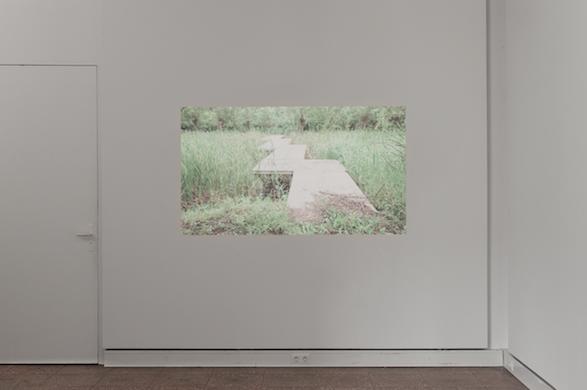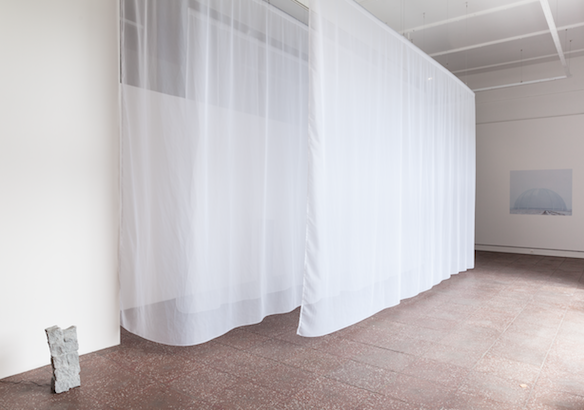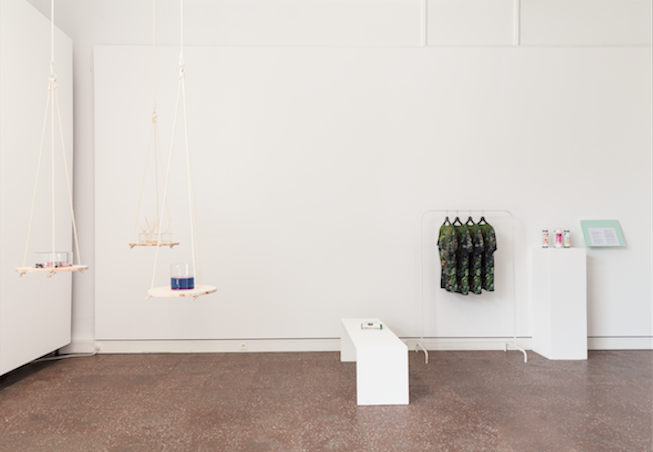PARK at Galerie im Turm
PARK at Galerie im Turm

Focusing on spaces for leisure and entertainment through a self-reflective lens, Galerie im Turm's current exhibition, PARK – curated by Celina Basra – considers the communicative strategies of public space, the relationship isolated places of contolled fantasy have to our reality, and the ways in which we experience and re-experience them through our continuous interaction and intervention.
Sparked by the positioning of spaces for art within this context, and reflecting as well on French philosopher Bruce Bégout’s novel “Le Park”, the exhibition comprises the work of seven artists who – largely through the varied implementation of video and photo documentation – address the functions and potentials of carefully articulated environments for leisure, fantasy and escape.

The nature of such spaces, which are simultaneously built for escape and imagination, yet are so carefully curated so as to be controlled, and controlling – where visitors' movements, responses and gaze are directed – is manifested in the design of the exhibition itself. A temporary wall, placed in the center of the space, confronting visitors head-on as they enter the gallery, conceals many of the works in the show, directing the flow of movement around it, as a point of access to the exhibition. In front of this wall, a maze of translucent white fabric is suspended from ceiling tracks, reminiscent of a stage curtain.
The curtain comprises an installation by Randi Renate, in which, once visitors follow the billowing path through sheer folds, a video projection can be viewed within the innermost enclosure. There, projected onto a single, hanging piece of the same cloth, is a video recording taken from the ferry traveling around Naoshima Islands of Japan. Before this small projection screen stands a partial barricade, blocking our access to it, signaling its prohibition of any further advancement. The fabric projection screen can be reached but not touched – even though its constantly shifting, sensuous and tactile surface beckons to be touched: to be felt. It, like the video's imagery – which captures the scenery surrounding the Benesee Art Site of the islands – evokes a distanced experience, a mediated mode of knowing without seeing, or feeling, for oneself. As the exhibition unfurls, the installation's structuring of experience, central within the gallery, can be seen to play a central role conceptually as well.

Navigating the initial architectural framing and entering the interior of the exhibition space, the first image presented is that of an exterior view of another architectural structure: the Tropical Islands dome. In Lilli Kuschel's ethereal photograph, the dome's membrane melts away into the gray sky that surrounds it: a barely perceptible border between the lush environment protected inside and the cold, barren reality of the world outside. Beside this image capturing the thinly veiled artificiality of Tropical Islands is a rock speaker emitting human-produced bird sounds: compounding the effects of artifice and simularcum. The rock speakers are the work of Lola Göller, and are placed on the floor intermittently throughout the space. Their construction is less faux naturalistic and more exaggeratedly artificial in the preciseness of their irregularity, seemingly less concerned with blending seamlessly into the landscape and instead announcing their presence as non-discreet objects. The small towers, rising vertically, usher vistors through with envelopments of manufactured sound, as video and photoworks by Kay Walkowiak and Sara-Lena Maierhofer present images of Wonderland – the abandoned and reclaimed theme park at the periphery of Peking – and a speculative fiction of the world existing within Mount Bosavi, Papua New Guinea, respectively: both locations inhabiting the border between reality and make-believe.
Bringing atmospheric effects to a more visceral level, a scent installation by Klara Ravat, hanging towards the end of the exhibition, issues three distinctive scents intended to evoke the memory of a fair and its remnants: fresh greenery, sweet, synthetic fruit flavors, and an animal, bodily stench. Placed near to a copy of Bégout’s novel, this installation, with the artificial sweetness and base unpleasantness of its odors, emanates subtle notes of decay and alludes to darker notions underlying the conceptions of parks written about by Bégout: as spaces not only for fun and fantasy, but for the haunting experience of grotesque actualities. Through this mode of embodied experience – images internalized through the sense of smell – the 'park' is not only conceived to offer a direct, tangible experience, but is envisioned as a sort of virtual reality.

An exploration of disparate forms of spatial experience and the communicative means and methods of public spaces unfolds throughout the exhibition, as the central wall is circumnavigated and the scents, sounds and visuals constitute our relationship to it: for instance, in the sugary pastel hue of the walls, which exudes a playfulness and artificiaiity. On the opposite face of the wall, Renate's fabric path and interior fabric screen sway gently in the breeze and with the movements of visitors passing through. The ways in which the fabric responds to and directs the viewer's physical relationship to space – its motion also manipulating our perception of the video projection by alternately swinging it closer and farther away – illuminates the nature of fabric as a device for communication, with the capacity to reveal, hide and distort through its translucency and fluidity. Here, this effect visualizes the notion that, in such spaces, there’s always a path to follow: one that provides a carefully orchestrated, guided experience with a certain allowable extent of flexibility, or the illusion thereof. In a printed interview displayed on the wall of the exhibition space, the interviewer inquires of a former Disney World employee whether creativity can be limited by such a highly commercialized, controlled environment that is also grounded upon notions of imagination and adventure. It is this question that seems to pervade the exhibition.

This interview text is located towards the end of the exhibition, beside a display of candles and a rack of hanging shirts. Arranged to evoke a concept store – as the work by Kathrin Günter, which includes the candles and Celebrity Tarot, is referred to – or a souvenir shop, this section of the exhibition ties in the commercial underpinnings of spaces for recreation, taking them as parks in their own right. Whether an object is purchased or not, they provide another experience that calls to the senses: enfolding visitors in an intoxicating mixture of textures, scents and kaleidoscopic arrays of color. It is in the intricate mix of distinctive elements, prompting the examination of what defines a space for leisure, that the exhibition opens up the term 'park' – guiding us through, facilitating our experience of it, while leaving it open for our own wanderings and further contemplation.
***
PARK On view until 3 September 2017 Galerie im Turm more info